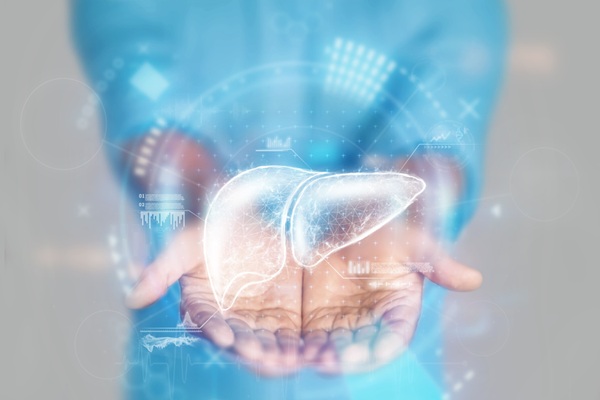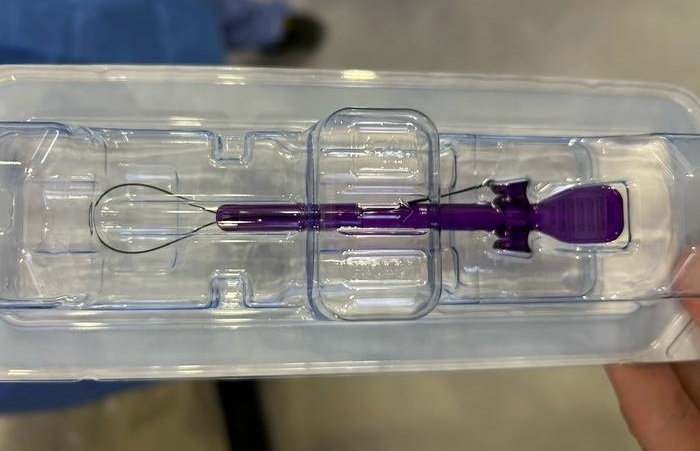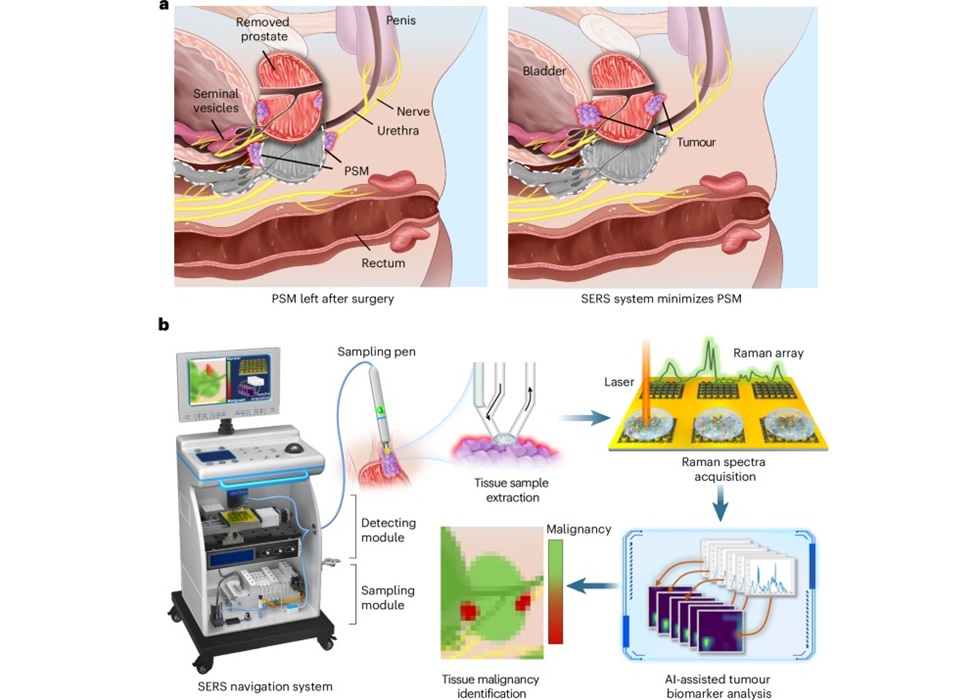Prone Positioning Not Relevant to Survival Rate in Patients with ARDS
|
By HospiMedica International staff writers Posted on 30 Nov 2009 |
Prone positioning during mechanical ventilation may not improve survival duration in patients with acute respiratory distress syndrome (ARDS), according to a new study.
Researchers at the Ospedale Maggiore Policlinico di Milano (Italy) conducted the multicenter randomized Prone-Supine II trial to evaluate possible outcome benefits of prone positioning in patients with ARDS and moderate or severe hypoxemia. A total of 342 adults with ARDS receiving mechanical ventilation at 23 centers in Italy, and two in Spain, were enrolled in the study, and were prospectively stratified into subgroups with moderate and severe hypoxemia. The participants were randomly selected to supine positioning (174 patients) or prone positioning for 20 hours per day (168 patients) during ventilation. The main endpoint of the study was 28-day all-cause mortality, and secondary endpoints were 6-month mortality and mortality at intensive care unit discharge, organ dysfunction, and complication rate associated with prone positioning.
The researchers found that for the overall entire study population evaluated between February 2004 and June 2008, prone and supine positioning were associated with similar mortality rates at 28 days and six months; however, the prone group had a significantly higher complication rate. For patients with moderate hypoxemia, outcomes were also similar in the prone and supine groups at 28 days and at 6 months. For patients with severe hypoxemia, 28-day mortality rate was 37.8% in the prone group and 46.1% in the supine group, and six-month mortality rate was 52.7% and 63.2%, respectively. Positioning was not associated with any apparent differences in median sequential organ failure assessment (SOFA) scores, ventilator-free days, or intensive care unit length of stay. The study was published in the November 11, 2009, issue of the Journal of the American Medical Association (JAMA).
"Do the findings of this trial, together with those of previous studies, represent the end of the prone position technique?” inquired lead author Paolo Taccone, M.D., and colleagues of the department of anesthesia. "Undoubtedly, the data of the present trial together with previous results clearly indicate that prolonged prone positioning, in the unselected ARDS population, is not indicated as a treatment. However, its potential role in patients with the most severe hypoxemia, for whom the possible benefit could outweigh the risk of complications, must be further investigated.”
Related Links:
Ospedale Maggiore Policlinico di Milano
Researchers at the Ospedale Maggiore Policlinico di Milano (Italy) conducted the multicenter randomized Prone-Supine II trial to evaluate possible outcome benefits of prone positioning in patients with ARDS and moderate or severe hypoxemia. A total of 342 adults with ARDS receiving mechanical ventilation at 23 centers in Italy, and two in Spain, were enrolled in the study, and were prospectively stratified into subgroups with moderate and severe hypoxemia. The participants were randomly selected to supine positioning (174 patients) or prone positioning for 20 hours per day (168 patients) during ventilation. The main endpoint of the study was 28-day all-cause mortality, and secondary endpoints were 6-month mortality and mortality at intensive care unit discharge, organ dysfunction, and complication rate associated with prone positioning.
The researchers found that for the overall entire study population evaluated between February 2004 and June 2008, prone and supine positioning were associated with similar mortality rates at 28 days and six months; however, the prone group had a significantly higher complication rate. For patients with moderate hypoxemia, outcomes were also similar in the prone and supine groups at 28 days and at 6 months. For patients with severe hypoxemia, 28-day mortality rate was 37.8% in the prone group and 46.1% in the supine group, and six-month mortality rate was 52.7% and 63.2%, respectively. Positioning was not associated with any apparent differences in median sequential organ failure assessment (SOFA) scores, ventilator-free days, or intensive care unit length of stay. The study was published in the November 11, 2009, issue of the Journal of the American Medical Association (JAMA).
"Do the findings of this trial, together with those of previous studies, represent the end of the prone position technique?” inquired lead author Paolo Taccone, M.D., and colleagues of the department of anesthesia. "Undoubtedly, the data of the present trial together with previous results clearly indicate that prolonged prone positioning, in the unselected ARDS population, is not indicated as a treatment. However, its potential role in patients with the most severe hypoxemia, for whom the possible benefit could outweigh the risk of complications, must be further investigated.”
Related Links:
Ospedale Maggiore Policlinico di Milano
Latest Critical Care News
- Nanogel Technology Almost 100% Effective in Destroying Drug-Resistant Bacteria Within Hours
- Wearable Ultrasound Sensor Delivers Noninvasive Treatment Without Surgery
- Gel-Free ECG System to Transform Heart Health Diagnosis
- Biodegradable Patch Repairs Damaged Tissue After Heart Attack
- Magnetically Guided Microrobots to Enable Targeted Drug Delivery

- Smart Nanomaterials Detect and Treat Traumatic Brain Injuries Simultaneously
- Earlier Blood Transfusion Could Reduce Heart Failure and Arrhythmia in Heart Disease Patients
- 'Smart' Shirt Detects Epileptic Seizures in Real Time
- Skin Patch Measures Effectiveness of Flu/COVID Vaccines in 10 Minutes
- Complete Revascularization Reduces Risk of Death from Cardiovascular Causes
- Tiny Fish-Inspired Robots Navigate Through Body to Deliver Targeted Drug Therapy
- Coronary Artery Stenosis Could Protect Patients from Pulmonary Embolism Effects
- Sweat-Powered Sticker Turns Drinking Cup into Health Sensor
- Skin-Mounted 3D Microfluidic Device Analyzes Sweat for Real-Time Health Assessment
- New Therapeutic Brain Implants to Eliminate Need for Surgery
- Stem Cell Patch Gently Heals Damaged Hearts Without Open-Heart Surgery
Channels
Surgical Techniques
view channelNovel Endoscopy Technique Provides Access to Deep Lung Tumors
Detecting lung cancer early can save lives, but diagnosing small tumors deep in the outer regions of the lungs remains a major clinical challenge. Although CT scans frequently identify tiny suspicious... Read more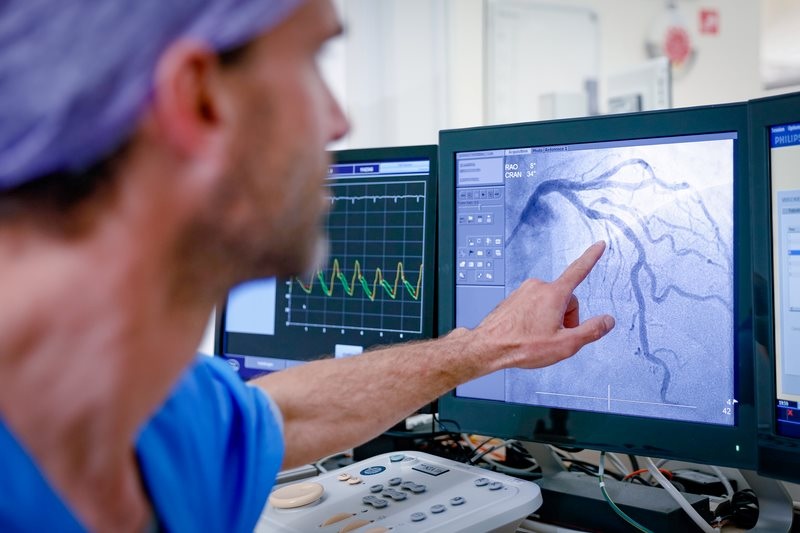
New Study Findings Could Halve Number of Stent Procedures
When a coronary artery becomes acutely blocked during a heart attack, opening it immediately is essential to prevent irreversible damage. However, many patients also have other narrowed vessels that appear... Read morePatient Care
view channel
Revolutionary Automatic IV-Line Flushing Device to Enhance Infusion Care
More than 80% of in-hospital patients receive intravenous (IV) therapy. Every dose of IV medicine delivered in a small volume (<250 mL) infusion bag should be followed by subsequent flushing to ensure... Read more
VR Training Tool Combats Contamination of Portable Medical Equipment
Healthcare-associated infections (HAIs) impact one in every 31 patients, cause nearly 100,000 deaths each year, and cost USD 28.4 billion in direct medical expenses. Notably, up to 75% of these infections... Read more
Portable Biosensor Platform to Reduce Hospital-Acquired Infections
Approximately 4 million patients in the European Union acquire healthcare-associated infections (HAIs) or nosocomial infections each year, with around 37,000 deaths directly resulting from these infections,... Read moreFirst-Of-Its-Kind Portable Germicidal Light Technology Disinfects High-Touch Clinical Surfaces in Seconds
Reducing healthcare-acquired infections (HAIs) remains a pressing issue within global healthcare systems. In the United States alone, 1.7 million patients contract HAIs annually, leading to approximately... Read moreHealth IT
view channel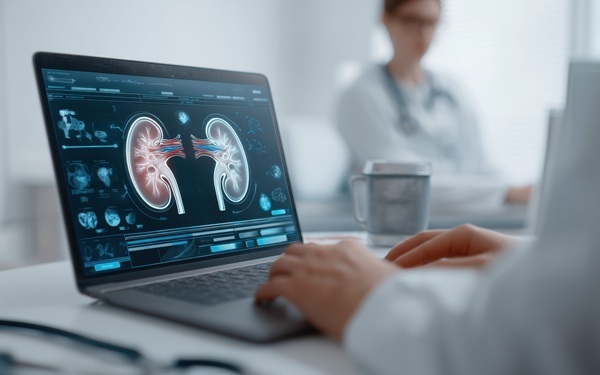
EMR-Based Tool Predicts Graft Failure After Kidney Transplant
Kidney transplantation offers patients with end-stage kidney disease longer survival and better quality of life than dialysis, yet graft failure remains a major challenge. Although a successful transplant... Read more
Printable Molecule-Selective Nanoparticles Enable Mass Production of Wearable Biosensors
The future of medicine is likely to focus on the personalization of healthcare—understanding exactly what an individual requires and delivering the appropriate combination of nutrients, metabolites, and... Read moreBusiness
view channel
Philips and Masimo Partner to Advance Patient Monitoring Measurement Technologies
Royal Philips (Amsterdam, Netherlands) and Masimo (Irvine, California, USA) have renewed their multi-year strategic collaboration, combining Philips’ expertise in patient monitoring with Masimo’s noninvasive... Read more
B. Braun Acquires Digital Microsurgery Company True Digital Surgery
The high-end microsurgery market in neurosurgery, spine, and ENT is undergoing a significant transformation. Traditional analog microscopes are giving way to digital exoscopes, which provide improved visualization,... Read more
CMEF 2025 to Promote Holistic and High-Quality Development of Medical and Health Industry
The 92nd China International Medical Equipment Fair (CMEF 2025) Autumn Exhibition is scheduled to be held from September 26 to 29 at the China Import and Export Fair Complex (Canton Fair Complex) in Guangzhou.... Read more











